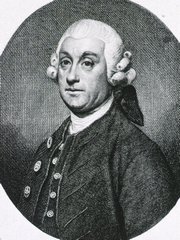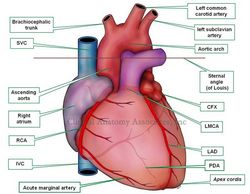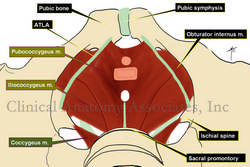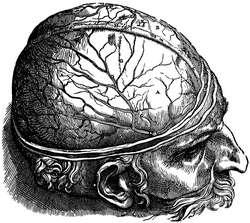|
Sir Percival Pott (1714 – 1788)
English surgeon and anatomist, Percival Pott was born in London on January 6, 1714. His name has the alternate spelling Percivall. In 1729 Pott started his apprenticeship with a surgeon, William Nourse. At age 22 he received the diploma from the Company of Barber Surgeons, and by age 34 he became a full independent surgeon at St. Bartholomew’s Hospital in London. In 1753 Percival Pott was elected, with William Hunter, as Master of Anatomy at Surgeon’s Hall
His name is eponymically remembered in “Pott’s fracture”, a condition that apparently he himself suffered and that kept him in bed writing several of his most important works. This historical account is refuted by many and could be legend. The fact is that Percival Pott did write about what today is known as “Pott’s fracture”.
Percival Pott was elected to the Fellowship of the Royal Society in 1764 and became Governor of the Company of Barber Surgeons in 1765.
|

|
| Pott was one of the first to recognize a condition caused by industrial working conditions when he diagnosed “Chimney Sweeper’s Cancer” a scrotal cancer caused by the exposure to soot and poor working and personal hygienic conditions.
Some of Pott’s eponyms:
• Pott’s fracture: Fracture of the fibula superior to the lateral with rupture of the medial ligament and outward displacement of the foot
• Pott’s disease: Spinal tuberculosis with hyperkyphosis
• Pott’s puffy tumor: Edema of the scalp due to underlying osteomyelitis and suppuration
Sources:
1. "Sir Percival Pott" Ann R Coll Surg Engl (Suppl) 2011; 93:66–67
2. “Percivall Pott (1714–1788) and chimney sweepers’ cancer of the scrotum” Brown JR, Thornton JL. Br J Ind Med 1957; 14: 68–70
3. "Percival Pott; Pott's fracture, Pott's disease of the spine, Pott's paraplegia". Harold, E. J Periop Pract, 22 (11), 366
4. “The Origin of Medical Terms” Skinner, HA 1970
5. “Dictionary of Medical Eponyms” Firkin, BG; Whitworth JA 1987
6. “Invective in surgery: William Hunter versus Monro Primus, Monro Secundus, and Percival Pott” Ravitch. MM, Bull N Y Acad Med. 1974; 50(7): 797–816
7. “Percivall Pott” Dobson, J. Ann Roy Coll Surg Eng 1972: 50; 50-65
Original image courtesy of "Images from the History of Medicine" at www.nih.gov
|






